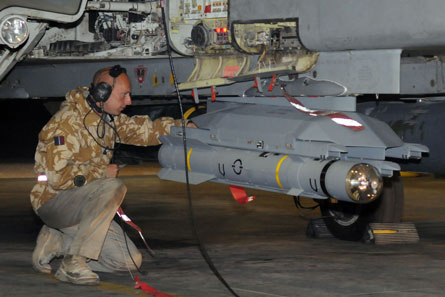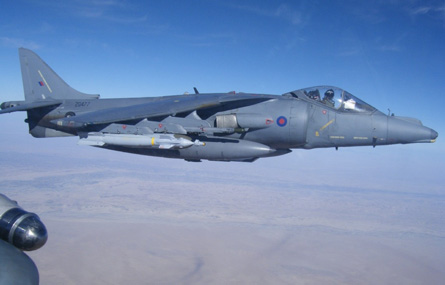The UK Royal Air Force has flown its first operational sortie over Iraq carrying an upgraded version of MBDA's Brimstone air-to-surface missile.
Now being carried by 9 Sqn-operated Panavia Tornado GR4 strike aircraft deployed to Al Udeid air base in Qatar, the Brimstone has recently been equipped with a dual-mode seeker (DMS) that offers a laser guidance mode in place of its original millimetre-wave radar sensor. The work has been conducted under an urgent operational requirement deal to support British and coalition activities in Iraq and Afghanistan.
 |
|---|
© Crown Copyright |
"The new DMS Brimstone and [Raytheon Systems] Paveway II weapons fit is perhaps the most relevant to current GR4 operations," says 9 Sqn officer commanding Wg Cdr Nick Hay, speaking to UK publication RAF News after the recent milestone.
The Brimstone system is also expected to arm the GR4s that will be deployed to Kandahar airfield in Afghanistan in early April, replacing a long-term RAF and Royal Navy detachment of BAE Systems Harrier GR9/9As.
In addition to having a new precision guidance mode, the weapon's 50kg (110lb) launch weight will offer a low-collateral damage option to commanders in the battle against the Taliban. The Tornado GR4 force is also soon to receive Raytheon's 226kg Paveway IV laser/GPS-guided bomb, which entered use with UK Harriers in Afghanistan late last year.
Heavily adapted from Lockheed Martin's helicopter-launched AGM-114 Hellfire missile, the Brimstone was developed for fast-jet applications under the UK Ministry of Defence's air-launched anti-armour weapon programme. This was worth a projected £899 million ($1.3 billion) before the DMS upgrade effort, according to figures released in the UK National Audit Office's Major Projects Report 2007 publication.
The baseline Brimstone system entered RAF service with the GR4 in 2007. The weapon is also to be integrated with the UK's Harriers and Eurofighter Typhoons.
 |
|---|
© Crown Copyright |
Source: Flight International
















